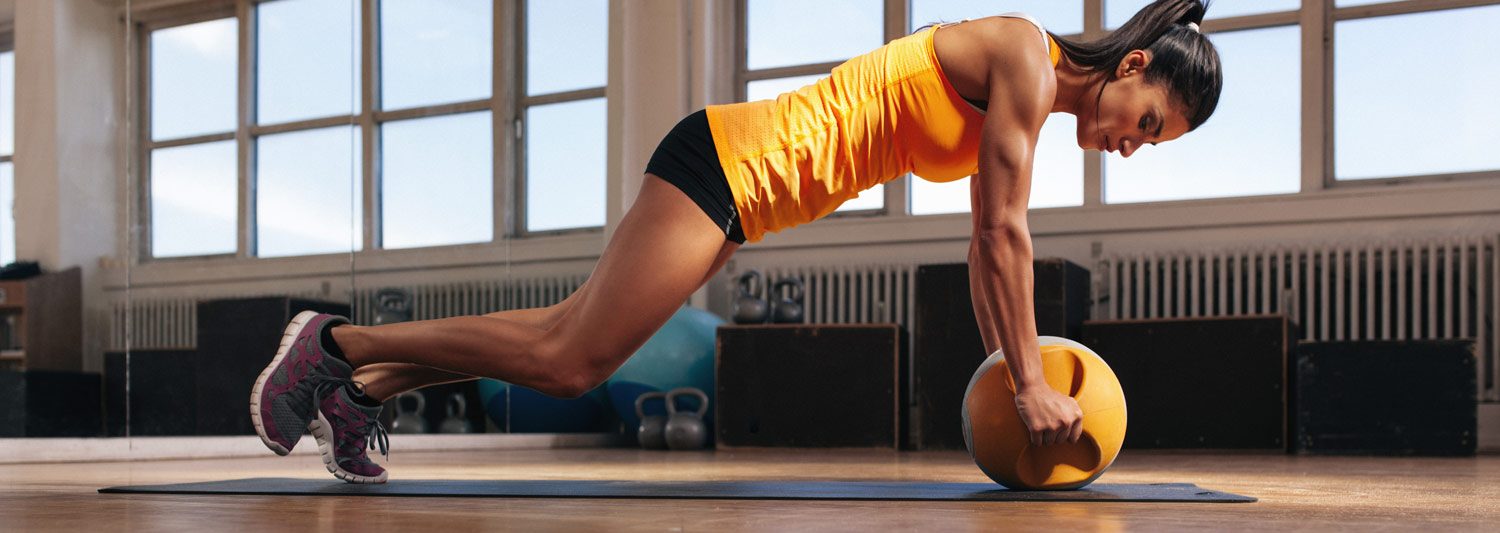I wish that I could tell you that exercise is all it takes to prevent weight gain years after a hysterectomy.
For me, it sure didn’t — but it’s helped.
I’ve been working out regularly since I was young. I rode a stationary bike for 30 minutes every day in my early teens. In my mid to late teens, I danced with my sister for a few hours in the evenings. On most days, it didn’t even feel like I was working out. I was just having a great time and doing it to improve my dance skills.
In college, I walked regularly…but this time, I had to because it was my primary means of transportation. So, other than taking the bus, I walked just about everywhere.
After college, I deliberately planned exercise into my routine on most days. Mornings worked best for me, but I’d encourage you to find your ideal time. This routine followed me into my 30s, 40s and now 50s.
So what does all this have to do with keeping the extra weight off years after my hysterectomy?
Since my body is so used to exercising, it’s more difficult to feel challenged during my workouts. Here are the steps I follow.
Don’t just exercise. Switch up your workout routine.
I found that preventing weight gain wasn’t just about the exercise I was doing, but I also had to switch up my workouts to reap more rewards post-hysterectomy.
It’s easy for my body to get lazy and remember what I do from day to day, which sometimes contributes to my weight gain. Before my body has a chance to decide to hold onto the fat, I switch up the workout.
Sometimes, I’ll switch between cardio and strength training, or do a similar routine for a few weeks, then change things up again. I like when my muscles ache because it means I’m challenging myself.
Adding weights into my exercise program.
After my hysterectomy, I couldn’t wait to start lifting weights again. And I don’t mean using weights to bulk up, but for toning. I constantly nagged my doctor about when I could start adding the weights back. When he finally gave me the go-ahead, I eased back into strength training.
At first, I used lighter weights, then slowly increased them. Sometimes, I did more repetitions with the lighter weights. Other times, I did less repetitions with heavier weights.
Women who’ve had a hysterectomy are more prone to developing a prolapse, so it’s important to protect our pelvic floor, even years after the surgery.
When in doubt, always listen to your body and stop if you feel any discomfort. You can choose weighted exercises, opt for workouts you can do while sitting upright or lying on a firm, but flat surface — like a weight bench or the floor.
Here are some exercises that I do with my body weight.
- Modified planks on my hands and knees
- Modified side planks on my knees
- Wall push ups or modified girl push ups on my knees
- Triceps dips
- Wall squats or modified narrow stance squats
- Low-impact lunges
Years after my hysterectomy, I continue to do resistance training a few times a week. Depending on the muscles I’m working (and how strong the area is), I may lift the weight while seated or lying down when possible — trying to protect my pelvic floor.
The weight limit may be different for you, depending on where you are in your fitness journey, if you’ve had a prolapse in the past, want to prevent a prolapse, or haven’t gotten your doctor’s approval to lift weights. If you’re concerned about prolapse, a physical therapist specializing in prolapse can walk you through safe options that’ll work for you.
My Total Gym is particularly good for resistance training because it lets me change up the resistance level and use my body weight, so I can work the muscle groups differently.
When I travel, I carry my resistance bands along and use my body weight for some exercises. That way, I can still work out if the hotel doesn’t have a gym.
Here are some resistance exercises that I do to keep the weight off:
- Modified narrow stance squats with weights on sides vs shoulders
- Standard squats with alternating punches (with and without weights)
- Tricep kickbacks
- Bicep curls and hammer curls (while seated)
- Overhead tricep extensions (while seated or lying down)
- Reverse fly
Adding aerobics into my exercise routine.
While I love resistance training, I also add aerobics to my routine a few days a week. Again, because my body is so used to exercising, I try to switch up my aerobics as well.
One day, I may do a 30- or 45-minute aerobic workout on the floor or on my Total Gym. Another day, I’ll combine aerobics with weights.
Sometimes, I’ll do a 30-minute aerobic workout in the morning, then walk for 30 minutes in the evening.
Walking is one of my favorite forms of aerobics. It helps me keep the weight down, especially when I incorporate it into my workout program. Plus, since walking is a low-impact exercise, you can add it to your activities even if you’ve just had a hysterectomy. You may find that you can only walk a few minutes at a time — which is normal.
After my hysterectomy, it was difficult to walk more than 5 to 10 minutes without taking a break. However, my doctor encouraged me to do so.
Today, I try to walk several times a week. My legs are naturally thick, and walking trims them down.
Since I use a treadmill, I can also change the incline level if I want to challenge myself or switch between a brisk walk or normal pace throughout the walk. Additionally, I can use hand weights during the walk.
Focusing on specific areas.
When we lose weight, our body decides where it wants to lose it first, even if we’re targeting a specific area.
Still, I like to target various areas of my body during my workout, especially if it’s a trouble spot or has been in the past.
Some days, I’ll focus on my arms, and other days, my legs and so on. I find that over time, these areas start toning up, which makes them look smaller — even if my weight doesn’t change.
Taking a day off from my workouts.
This one was hard for me. At first, I had to force myself to take a break, but it’s gotten easier over time.
I was surprised by how important a rest day is for weight loss. When I worked out every day without a break, my body started working against me. I reached a plateau, and instead of losing weight, I started gaining it back.
Now, I take at least one day off from my workouts. In fact, I try to space out my resistance training days — so they’re roughly 2-3 days apart.
This gives my muscles a chance to recover — preventing injury from overuse.
Although I stretch after my daily workouts, I take some additional time to do so on my day off (anywhere from 15-30 minutes). The stretch helps me nurse any discomfort and improve my flexibility.
The day’s rest rejuvenates me when I get back to my exercises. My workout is even more enjoyable, and I can do it better and for longer. I’ll encourage you to add a rest day into your routine as well.
Takeaway.
When it comes to maintaining a healthy weight after a hysterectomy, the same old routine may not work. Try switching up your workouts and incorporating weights, aerobics and walking. A day’s rest may be just what you need to take your fitness to the next level — combined with a healthy lifestyle, of course. If you still have trouble keeping the weight off, other underlying issues may be a factor.
I’m rooting for you…
If you need more ideas for managing your weight post-surgery, download my free e-book, 7 Surprising Ways to Balance Your Hormones & Blast Away the Pounds After a Hysterectomy.




 Can Probiotics Help You Lose Weight Post-Hysterectomy?
Can Probiotics Help You Lose Weight Post-Hysterectomy?



